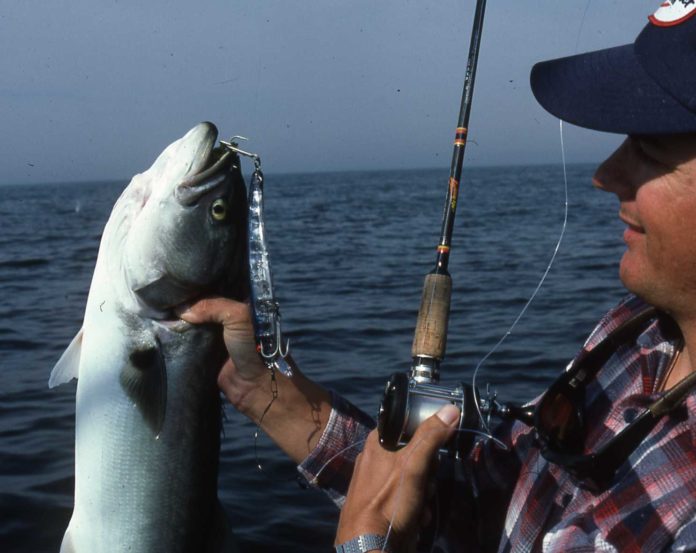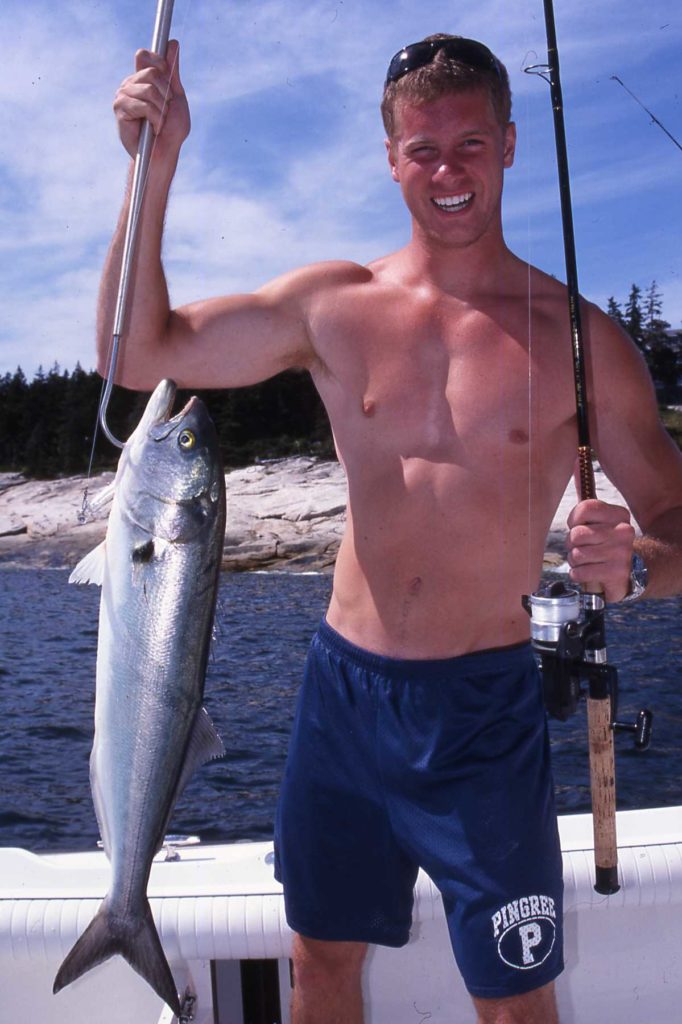
Ultralight tackle may have a niche in saltwater fishing, but it’s not suitable for everyone, nor does it apply in every situation or for all fish species. Here’s why.
By Barry Gibson
This happened several seasons ago. Two experienced freshwater anglers from the Midwest reached out one evening, eager to “put the hurt” on some striped bass and wanting to arrange a trip for the forthcoming weekend. The caller seemed knowledgeable.
“Hey,” he asserted, “Wally and I catch plenty of sizable smallmouths and walleyes using 2-pound line, and last spring, I caught a pike as big as my leg on 4-pound line. We have the skills. Just set us up for the bass, and we’ll handle the rest. We’ll even bring our own gear.”
I felt a bit doubtful, but customers are customers. I figured I had nothing to lose—or so I thought.
On the scheduled morning, Wally and Dave arrived, packed with rods and heavy tackle boxes. They were friendly enough, and after exchanging pleasantries, we departed from the dock and set off.
Bingo! We stumbled upon a half-acre of school-sized stripers thrashing about on the surface. The scene was filled with splashes and boils. Dave dug through one of his boxes and pulled out a small jointed swimming plug, the right size for a 10-inch brook trout. With remarkable speed, he tied it onto his line, picked up his 5-foot spinning rod, and cast the lure into the gentle morning breeze.
 Using ultralight tackle has compromises, such as break-offs and the potential for fish to experience exhaustion and oxygen deprivation.
Using ultralight tackle has compromises, such as break-offs and the potential for fish to experience exhaustion and oxygen deprivation.
The small balsa minnow soared through the air before swerving back past his left ear and entangling itself around the VHF antenna.
“The wind’s a bit too strong,” he muttered. “Do you have anything heavier I can cast?”
I searched around and located a 3/4-ounce topwater popper, which I handed to him. He tied it on and launched it with impressive strength. The reel’s bail snapped shut as the plug ascended, followed by a sharp snap of the line. The lure disappeared from sight.
“Darn reel,” Dave grumbled. “Do you have another lure?”
That’s how our day commenced. By noon, the deck was cluttered with empty lure packages and discarded blister packs, along with tangled messes of leftover line. Wally’s and Dave’s tackle boxes looked like they had been ravaged by a tornado, and I estimated I had contributed at least $40 worth of lures to their efforts. We hadn’t landed a single striper.
Defeated, the anglers ascended the ramp later that afternoon, their faces displaying absolute frustration. They promised to return, but as of now, I haven’t heard from them.
Ultralight … Not Always the Right Choice
While ultralight tackle can find some usefulness in saltwater fishing, it’s certainly not suitable for everyone and doesn’t work in every scenario or for every species. There’s a certain thrill in reeling in a 10-pound striper, redfish, or snook on 6-pound spinning gear, but certain factors require careful thought.
Firstly, there are fish that you will struggle with if you use 2- to 8-pound line, leading to more break-offs than successfully landed fish. A deep-water bottom fish might be hooked on very light line, but bringing it to the surface is a different challenge. You can’t apply much pressure with 8-pound line against a 20-pound grouper or a 10-pound mutton snapper that’s battling you 100 feet down.
Midrange fish like stripers, blues, reds, seatrout, and seabass can indeed be caught with ultralight tackle—despite my experience with Wally and Dave—but moderation is key. With some experience and caution, you can land respectable-sized game fish on 6-pound freshwater gear without issues.
Quick Fights, Healthy Releases
However, there are trade-offs. Allowing a striper or red to struggle for 20 minutes at the end of a 4- or 6-pound line means it won’t be in optimal condition when it’s released. Species such as bonito, yellowtail, false albacore, and Spanish mackerel require abundant oxygen, and longer fights on light tackle increase their risk of suffering from exhaustion and oxygen deprivation damage.
If you practice catch and release, use tackle that controls your catch within minutes. Gear rated at 10- to 17-pounds is generally adequate for most inshore game fish, though I may sometimes drop to 8-pound line if most of the fish are within the 3- to 10-pound bracket.
Preventing Break-Offs
Break-offs introduce other issues when using ultralight tackle. Losing a $10 lure is never enjoyable, particularly knowing there’s a fish swimming around with treble hooks lodged in its mouth. Contrary to popular belief, fishhooks do not “dissolve” in a few days. That lure or hook can remain in the fish’s mouth for months, impairing its ability to feed.
One way to reduce break-offs with light line is to employ 3 to 4 feet of slightly heavier mono or fluorocarbon as a shock leader.
When I fish with 8-pound line for schoolie stripers, I tie on a length of 20-pound fluorocarbon directly to the lure. The 20-pound leader withstands considerably more abuse than the 8-pound line, and I don’t frequently experience break-offs.
I’ll go out on a limb and say that I don’t believe 2-pound line is appropriate for the majority of saltwater scenarios. Yes, I acknowledge that the International Game Fish Association (IGFA) recognizes 2-pound tests as a line class for records, and there have been impressive catches, including a 126-pound blue shark, but is this truly sport fishing? Or merely a gimmick? You decide.
To clarify, I have been an advocate for light tackle for many years. But light tackle differs from ultralight. If you cannot land a fish quickly enough for it to remain lively and healthy upon release, or if you are breaking off more than 10 percent of hooked fish, you are likely using gear that’s too light for the job.
Therefore, unless you are genuinely aiming for a spot in the record books, consider upgrading to slightly heavier tackle that enhances your enjoyment. This approach also likely provides that fish a greater chance to fight another day.